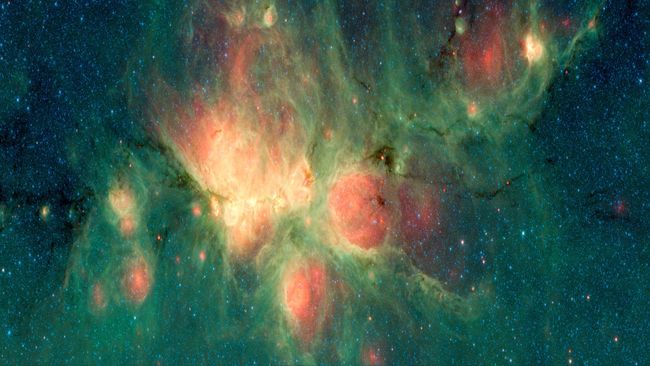Scientists have recently found a new immense smoke never found in space prior. The ’13-atom molecule, called 2-methoxyethanol, was detected in the NGC 6334-4 complex which is the so-called Cat’s Paw Nebula.

Astronomers are discovering a considerable new, previously unknown molecule in the Cat’s Paw Nebula, a star-forming area about 5,500 light years faraway. The new molecule –a 13 carbon atoms compound called 2-methoxyethanol – found outside of our solar system is one of the largest molecules anyone had ever seen up there, the scientists announced on April 12 of the Astrophysical Journal Letters.
Yet we usually imagine space and stars as being forever apart, as not connected with this or that matter but this so called void is teeming with miracles of chemistry as some crowds of atoms and molecules are taking birth while at others they are breaking up to form stars and suns. Catching up with the formation of complex organic molecules ranging from methane formulation, ethanol revival to formaldehyde restoration not just help scientists describe comprehensively how astronomical bodies and galaxies are born but also how the onset of life is strongly connected.
But that is not to undermine the Herculean challenge of finding these tiny but crucial building materials of the living substances. At each molecule, there is a new radiation “fingerprint” – a set of the wavelenghts of the light, which can be absorbed by the molecule. When one photon is absorbed, it is the wavelength that dictates the correspondence between the different energy levels. Every atom/molecule has its own ‘catalogue’ of these energy levels, and the photons will link every transition that can take place only between these client levels. This label of energy transfer not only is well detectable in samples but mostly astrochemists will be willing to chase this exact same energy imprint event in space.
“[In this case], our radio telescope has to capture the rotational signal from the molecules not only in the interstellar spaces but also in the regions of the outer space,” first study author Zachary Fried, a staff scientist in the laboratory of space quantum physics and astrochemistry at MIT, told me in an email. “Because the molecules in space obey one and the same quantum mechanical laws as on Earth, the rot
Chemists do exactly such as Robert Fried and his research partners, who are part of the very highly ranked group of Brett McGuire, an associate professor of chemistry at MIT, to detect a 13-atom molecule, in which one of the two atoms of hydrogen in ethanol is replaced with a group methoxy (O–CH3). This degree of complexity is almost unmatched outside the solar system where only six PIE (planet forming complexes) of higher than 13 atoms (Cr + >) have ever found.
Gerhardt said, alkanes “from just a few molecules up to the ten atoms or so are typically much less abundant than smaller hydrocarbons, which follow very simple pathways”. Also noteworthy is the fact that the spectral signal of these molecules is substantially dispersed among a greater number of transitions, making the individual spectral bands less strong and much harder to be observed directly.
However, the fact that they came the team to this coincidence was not just due to luck, they have also used artificial intelligence. This team had created a machine-learning technique to model the abundance of varieties of molecular species in the galaxy where a molecule is one of the chemical components. “We do this by introducing the trained models to the molecules that have not been detected yet, and then we may be able to predict which will be found in large number, and therefore potential strong candidates for the detectors,” Fried said.
Methoxy compounds had already been discovered previously by astronomers in the part of the HC-II Nebula, also called NGC-6334F, and in IRAS 16293, a binary system located 457 light-years away in the Rho Ophiuchi cloud complex. Thus, the research team had known that which place had to be targeted for the new molecule.
The ensuing data obtained didn’t contain any signature due to which the scientists concluded that IRAS 16293 probably may have not existed—yet, in the end they identified 25 pairs of matching signals from the Cat’s Paw Nebula and confirmed the presence of 2-methoxyethanol in the star-forming region.
With this, we had the ability of studying the varying thermal settings of the star systems and their impacts on the elemental makeup. In the paper, the authors are researching the possible causes for the observed chemical heterogeneity at the two different space objects. It might be attributed to variations in the radiation fields strength, along with different dust temperatures of those objects which are at different stages of star formation.
The team think the significance of their findings is the possibility of it becoming the groundwork for future missions to identify others as-yet-discovered molecules that exist in outer space.
Fried added, ” whether these paths are viable and productive depends on the very physical milieu of the chosen source .” “We may point at whose species exactly take part in the formation and/or destruction of the molecular species observed that would elucidate other species that may be candidates for future observations.”
Do not forget to share your opinion with us to provide you with the best posts !



0 Comments